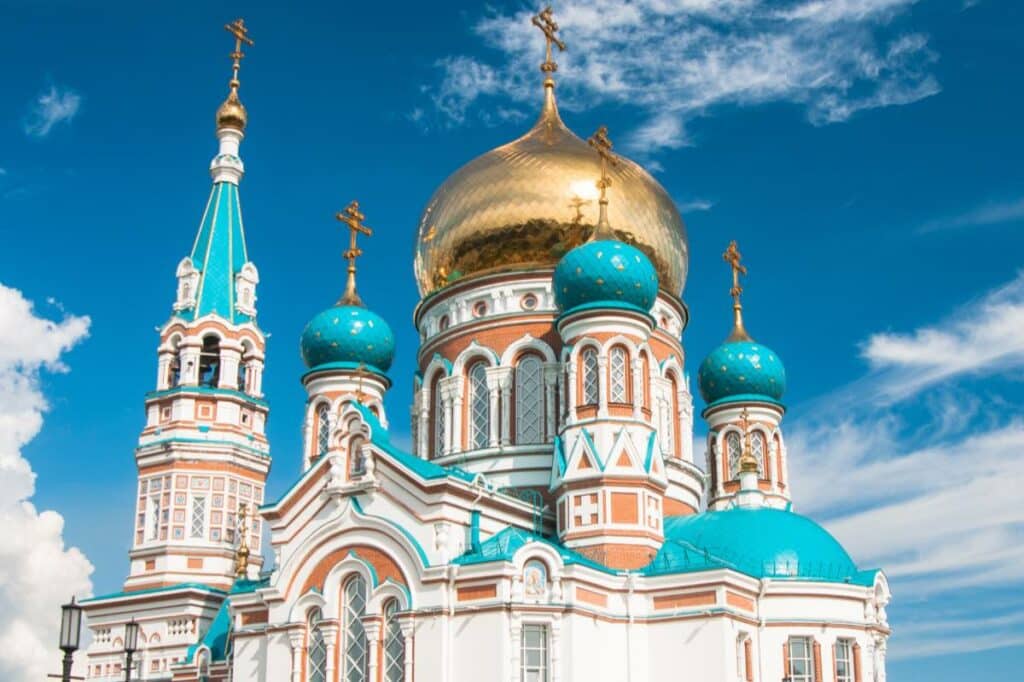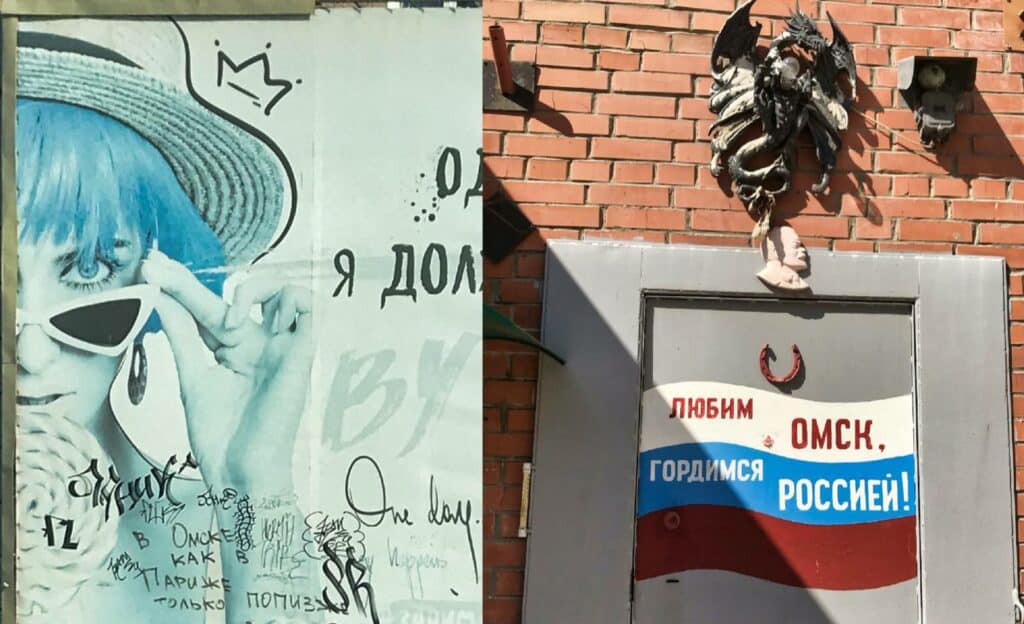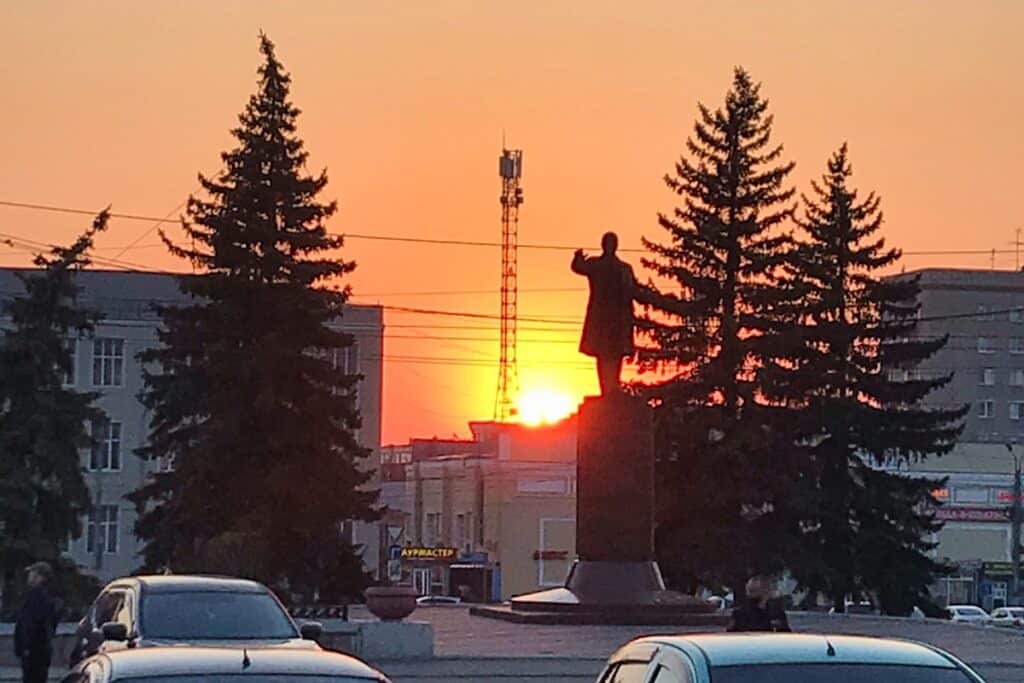“Don’t try to leave Omsk” – thanks to this meme, the second largest Siberian city Omsk has become one of the most famous cities in Russia. But being well-known does not automatically mean having a good reputation.
Omsk – The worst city in Russia
Fyodor Dostoevsky, one of the most important Russian writers, spent four years in an Omsk penitentiary.
“Omsk is a miserable little town. There are hardly any trees here. Heat and wind with sand in summer, snowstorms in winter. A dirty little town, military and obscene to the highest degree.”
Fyodor Dostoyevsky
So pejoratively wrote Dostoevsky to his brother in 1854 shortly after his release. In various unofficial rankings, Omsk has been declared the worst city in Russia, including by the well-known Moscow travel blogger and photographer Ilya Varlamov, who ran for mayor in Omsk in 2012. He had the ambitious goal of making the much-hated Omsk the most livable city in the country. Varlamov was not elected, because Moscow and Omsk are far apart – not only geographically.

Bathe in cheese and be buried quickly
The so-called Omsk cheesemakers – former employees of a cheese factory who bathed in milk at a company party at the factory – are known throughout Russia. They posted pictures of this themselves on the Russian social network VKontakte. Father and son Golovanovi are also from Omsk. They are Russia’s fastest morticians and winners of the “Graves without limits” competition to see who can dig a grave the fastest.
But is the city really that bad and are its inhabitants as creepy as you know from the Internet? To answer this question, I went there myself. I had to accept the risk of not being able to leave the city.
Third capital of Russia
“In Omsk it’s like Paris, only better”, “We love Omsk and are proud of Russia” – with these graffiti the city greeted me. The locals are apparently not as negative about their homeland as some bloggers from the capital. By the way, from 1918 to 1919, during the Russian Civil War, Omsk was the capital of the anti-Bolshevik White Russia led by Admiral Kolchak.

According to a poll conducted in the summer of 2021, 49% of Omsk residents were in favor of moving the capital from Moscow to Omsk. The idea of moving the capital has been discussed for several years, but it is unclear where. When, as part of a program for the development of Siberia, it was proposed that five new cities be founded in Siberia, the satirical portal “Panorama” (comparable to the “Onion”) posted the message that one of these five cities should be founded in the place where Omsk is today. The joke was well received.
The egg of Poleshayev and the birth of the meme
In Omsk, a monument commemorates the city’s founder Ivan Buchholz. Because of its strange shape, this monument is also called the “Egg of Poleshayev”. During a storm in 2014, the seven-meter sphere fell from its pedestal and thus tried to leave Omsk. But the monument could not escape – it was caught again in time by tractors and hoisted back onto its pedestal. A second attempt to escape two years later was also unsuccessful.
According to another, less beautiful version, the meme arose after the documentary of the same name about the difficulties of Omsk’s youth in the local labor market. The meme has become so widespread that even the deputy mayor of Omsk, Alexander Burkov, called it the cause of the region’s economic problems and complained that it would scare off investors.
The shortest subway in the world
An interesting Omsk sight is the metro. With only one station, the Pushkin Library stop, it would probably be the smallest metro in the world today, but in 2019 it was decided to stop the project. While the Soviet Union was still in power, the directive was that every city with over 1 million inhabitants should have a metro. In 1991, work began on building a metro in Omsk. The project failed several times, allegedly for lack of money.
According to another version, the available money was not used for years in accordance with the goal. After all, there is a subway bridge in Omsk and a permanently closed subway station, where art exhibitions are now held regularly. What does not exist, however, is a functioning subway. The Youtube-Channel Railways of the World took a closer look:
But even if there is no working metro in Omsk, there is at least one good place where you can forget your pain about the missing metro. In the library building, which is located in the immediate vicinity of the metro station, there is a private brewery “U Pushkina” (To Pushkin) at 11 Krasny Put Street. There you can taste delicious, freshly brewed and tapped beer from Omsk.

The Siberian citadel of underground music
And even though Omsk lacks obvious sights, there are other treasures to be discovered here. Namely, Omsk is the hometown of a famous Siberian musician and poet. The founder of the punk band “Grazhdanskaya Oborona” Yegor Letov, about whom we report in this article about Russian rock music, is from here. His name is closely connected with the city of Omsk, even though he did not give a single concert here.
In 2018, ten years after Letov’s death, there was a proposal from among the population to name the Omsk airport after Letov as part of the “Great Names of Russia” project. However, the Minister of Culture Medinsky thought it was bad custom to name an airport after a living person. “Letov is alive, and Lenin and Lennon” – Medinsky replied to the justified remark that Letov was already no longer alive.
Even though there are no names comparable to Letov in Omsk these days, the city’s underground scene is still quite lively. Well-attended alternative festivals are regularly held here and in the surrounding area. Even before the pandemic, I was lucky enough to experience the performances of the Omsk band Altera Pars, which many Siberian festival-goers and visitors to underground clubs know.
From the Omsk oblast, more precisely from the city of Kalachinsk, comes the Nordic ritual folk band Nytt Lan, which should be familiar to fans of Nordic folk music. The stouner rock band Groggy is also known far beyond the borders of Omsk. So Omsk is at least an important center of attraction for Russian music culture.
Germans in Siberia
And also especially for German visitors Omsk can be quite interesting. Because the first German settlers existed in Siberia already since the end of the 19th century. They were civil servants, members of the military and farmers. At that time Siberia was attractive for many. A second wave of migration to Siberia during and after the Second World War was less voluntary: Stalin ordered several thousand citizens of German origin to be deported to Siberia.
Before the collapse of the USSR, about 130,000 ethnic Germans lived in the Omsk oblast, just under half of them resettled in Germany during the 1990s. According to a census, 50,055 Germans still lived in Omsk Oblast in 2010, 14,470 of them directly in the city of Omsk.
In the summer of 2021, shortly before the end of Angela Merkel’s chancellorship, the residents of the Omsk village of Wechhnij Karbusch made a video asking the Chancellor to asphalt the main road in the village, because the oldest and most important road in the village, founded by the Russian Germans, is in a pitiful condition and they have to be ashamed when guests from Germany come to visit. The villagers addressed their request to Merkel because they did not receive any help from Russian politicians and officials. Unfortunately, however, a spokeswoman for Angela Merkel denied the request.

Lenin monument in Omsk
And so people in Russia prefer to look back to old constants – like Lenin. Even 30 years after the collapse of the USSR, Lenin is still perceived by many in Russia as a kind of sacred cow. Whether small or large, there is at least one Lenin monument in every Russian city. Omsk is no exception, there were once even 18 Lenin monuments in the city!
But one of them was dismantled and provides space for new legends. In 2007, when the Uspensky Cathedral was rebuilt on the main square of Omsk, someone noticed that the cast-iron Lenin standing next to it pointed with his hand to the cathedral. However, Lenin was a great opponent of the church and religion.
The monument was first covered for a few weeks and then secretly dismantled at night. The Omsk Secretary of the Russian Communist Party reacted indignantly, saw the action as a crime, and reported the city council to the prosecutor’s office. However, the monument never returned. There are different versions of the legend, which say that it is either stored somewhere or was demolished. However, perhaps the people of Omsk simply do not want to believe that Lenin actually managed to leave Omsk.
The author of this text thanks his long-time buddy and Omsk patriot Andrei Vlasov for the unique city tours and Nikita Plisko for the introduction to the alternative Siberian music scene.


